It is make or break in a courtroom. So much rests on the sound judgement, knowledge, fairness, and powers of interpretation of evidence of the presiding judge. It falls upon the lawyers to articulate evidence and testimony and build airtight cases that can withstand scrutiny in the court of law. We depend on judges and lawyers and our entire judicial system to deliver justice. It is critically important then that the articulating lawyers and presiding judges have optimal grasp on myriad issues they must deal with. For otherwise, justice is bound to be compromised.
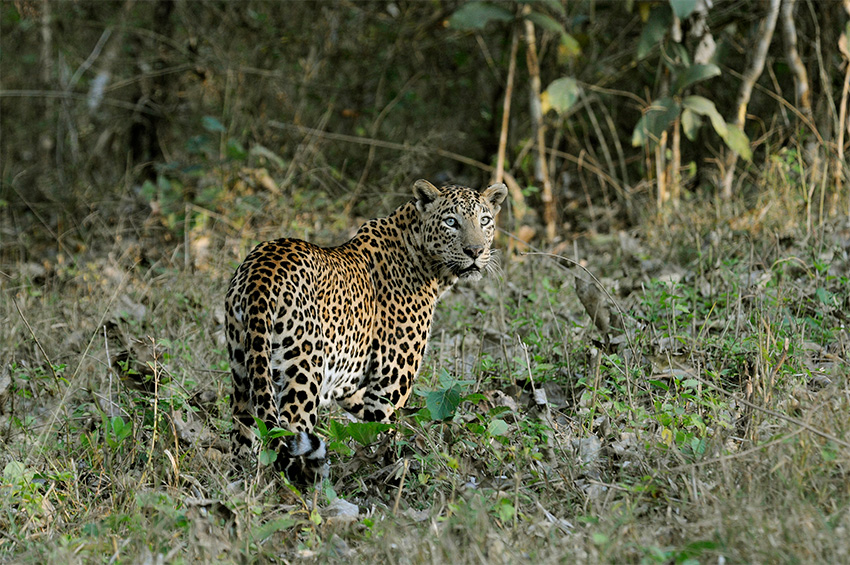
Photo credit: Dr. Anish Andheria
Justice itself cannot be limited to human entities alone. Fortunately, India’s legislation provides extensive frameworks to conserve wildlife, natural habitats, and the environment. The country’s environmental law framework boasts of diverse legislations that range from preventing air and water pollution (Air Prevention and Control of Pollution Act, 1981; Water Prevention and Control of Pollution Act, 1974;), to environmental protection (Environment Protection Act,1986), wildlife protection (Wild Life (Protection) Act, 1972), conservation of forests (Forest Conservation Act, 1980), and protection of biodiversity (Biological Diversity Act, 2002).
Laws when robust only in theory are still weak laws. Without active enforcement and execution of laws India’s forests, wetlands, grasslands, coastline, mountains, deserts along with the wildlife are gravely threatened by illegal activities. Hunting, wildlife trafficking, illegal encroachment of protected habitats, overexploitation of natural resources, rapid growth in linear infrastructure, pollution, etc. are crippling the nation’s ecological foundation, pushing countless species to the brink, impacting critical ecological services, and threatening livelihoods of millions. The fact that India is one of the most polluted nations and that India ranked 168 out of 180 countries in the Environment Performance Index 2020 speaks volumes about the dismal state of environmental governance.

Unchecked and often illegal developmental activities are causing irreparable damage to natural habitats. Photo credit: India Water Portal/Public Domain
India desperately needs an army of dedicated and trained environmental lawyers who are well versed with the plethora of environment, climate and conservation related-issues that plague our country. Hardly any lawyers solely practicing environment and wildlife law exist in India. Why?
“Environmental and wildlife law are very niche areas of law that weren’t popular until fairly recently. I think it may have to do with the minimal attention environmental law gets as a subject during the five years of law school. Most law students may not even be aware that a career in environmental law is a possibility, but it is heartening to see that there’s a significant influx of lawyers choosing to specialise in it now,” says Mridula Vijairaghavan, an Environmental Lawyer with the Wildlife Conservation Trust (WCT).
“That being said, I think that while it is important to have lawyers who are solely focused on environmental law, even those who practice in a multitude of areas can make meaningful contributions to the environment. For instance, lawyers who have been appointed as Special Public Prosecutors in certain high-profile cases of wildlife crime do not exclusively practice environmental law. Yet, they have made a significant and lasting impact on conservation,” she adds.
“It is not common for law schools in India to teach their students about laws pertaining to India’s prolific environment, wildlife and animal rights. Most law colleges broad-brush these laws during the three-to-five-year law programme. As a result, while many students may have an active interest in these subjects, it is neither nurtured in law schools nor seen as an active career option post-graduation,” explains C. Samyukta, Forensics expert with WCT.
Wildlife Crime and Punishment: Need to Sensitise and Train Lawyers and Judges
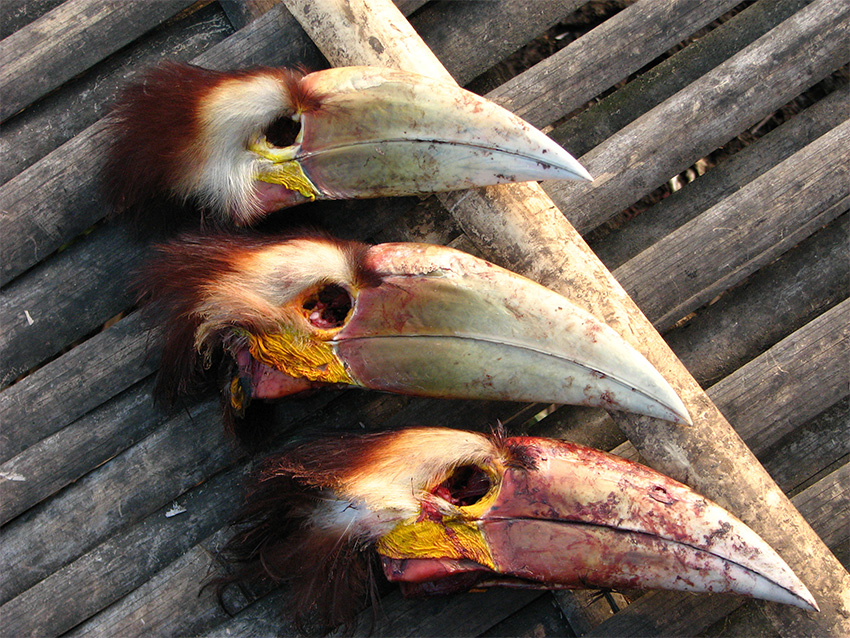
Wild animals are often killed for their body parts which are then sold in black markets. Hornbill skulls photographed in Arunachal Pradesh. Photo credit: Rohit Naniwadekar/Wikimedia Commons
Crimes against wildlife are rampant and thriving in India. Hunting for subsistence, traditional medicine, and religious practices; wildlife trafficking; and illegal pet trade pose serious threats to India’s wildlife populations, which are already being dealt severe blows by various other anthropogenic pressures. And sadly, India’s track record of convictions in wildlife crime cases is less than five percent. Justice can only be achieved when all the cogs of wildlife law and enforcement wheels are well-oiled and synchronised. And, one very important cog is the judiciary, alongside wildlife law enforcement officers and policy makers.
While on one hand enforcement agencies need to ensure better and stricter implementation of wildlife laws, on the other judges and lawyers need to be more sensitised and made aware of wildlife crime and intricacies involved so that wildlife-related cases are better prioritised and argued in court. Such a collective improvement will in turn result in improved conviction rates in the country, which will act as a major deterrent for wildlife offenders.
Capacity of the judiciary needs to be built in this regard.
“Courtrooms across India are overburdened with cases of humans committing all manners of crime against other humans. As a result, cases filed against hunters, polluters, illegal wildlife traders, and animal cruelty incidents are lost in the clutter. A sharp legal mind is needed to bring the Judges’ attention and justice to these environmental, wildlife, and animal rights “underdogs”. When combined with a judiciary that has been sensitised and trained in wildlife law, such legal acumen will ensure that strong sentencing of wildlife criminals becomes the norm rather than the exception,” says Samyukta.
WCT is working towards addressing this understated gap in India’s wildlife protection framework. Through its Combatting Wildlife Crime (CWC) Programme, WCT is not only training and building capacity of various state Forest Departments in wildlife law enforcement and crime scene investigation but is also working to systematically sensitise and create increased awareness through specialised workshops for various levels of the judiciary. The training programmes for judges and prosecutors are intensive and are conducted by WCT’s team of law and forensics experts in collaboration with the Forest Department and institutions such as the Madhya Pradesh State Judicial Academy.
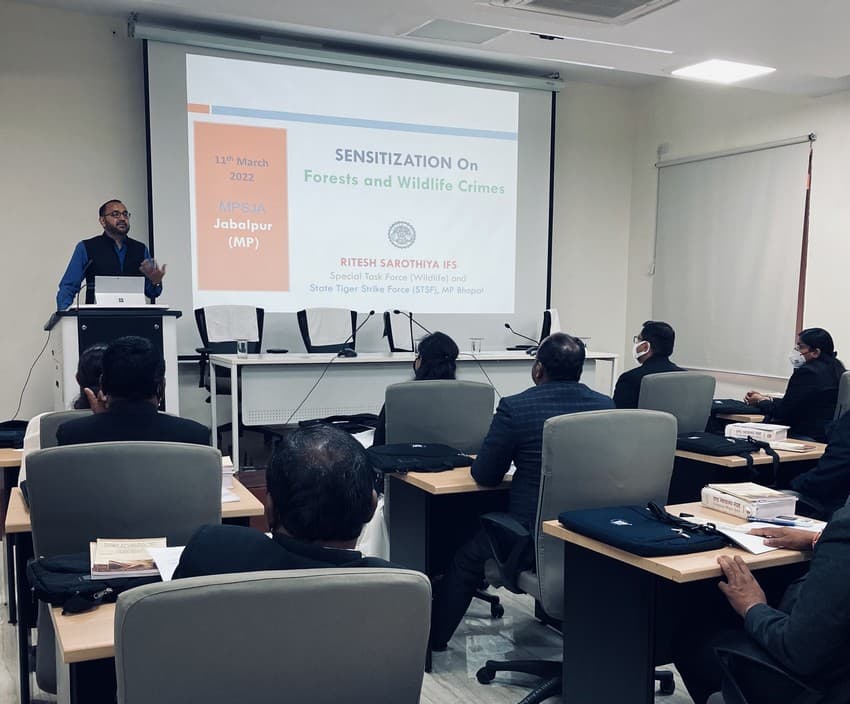
Senior forest officer Ritesh Sarothiya of the Madhya Pradesh Forest Department speaks to the participating judges at the Madhya Pradesh State Judicial Academy as part of WCT’s training programme. Credit: WCT
WCT’s programmes are designed to heighten awareness and understanding among the prosecutors and judges pertaining to the nature and extent of wildlife crime within their jurisdictions. They are trained in the nuances of the Wild Life (Protection) Act, 1972, and Indian Forest Act, 1927, and state-specific rules related to wildlife and forests. WCT’s experts further expose the participants to technicalities of wildlife crime investigation, forensics and handling of evidence to improve their understanding and appreciation of wildlife cases.
“Cases of wildlife crime are tried before magistrates who adjudicate a range of cases from those of murder and rape to narcotics and negligence. Therefore, they deal with a massive number of legislations on a daily basis, making it hard to pay special attention to a special Act like the Wild Life (Protection) Act, 1972. Judges may not be immediately familiar with it, or the context in which it operates. Therefore, sensitising the judiciary to the nuances and intricacies of the Act, and more importantly, to the plight of wildlife and the heavy costs of wildlife trade can go a long way in having a more aware judge presiding on the case. Several trial court judgments now take a compassionate view towards wildlife and emphatically state this in their judgments, indicating that sensitisation programmes for the judiciary go a long way in the fight against wildlife crime,” explains Ms. Vijairaghavan.
WCT has so far been conducting workshops for prosecutors and judges in the states of Maharashtra and Madhya Pradesh and positive changes are beginning to visibly unfold. Encouraging feedback that has come in from the trainees has given a boost to this programme. Several of them are already presiding over serious wildlife cases and WCT’s training programmes are helping them make informed decisions.
Catching Them Young
While working with already established law professionals is necessary, it is equally important to catch them young. Building interest and awareness around environmental education and wildlife conservation among the young law student community will prove more fruitful in the long run. And to this end, WCT’s unique wildlife protection-themed national level moot court competition in collaboration with Mumbai’s Government Law College (GLC) and Initiative for Climate Action (ICA) is a promising endeavour. Already three editions old, the Wildlife Protection Moot Court competition sees nearly 50 law students participating annually, from around 16 prestigious law colleges across India including NALSAR University of Law, Hyderabad; Jamia Milia Islamia, New Delhi; Chanakya National Law University, Patna; and Symbiosis Law School, Pune.
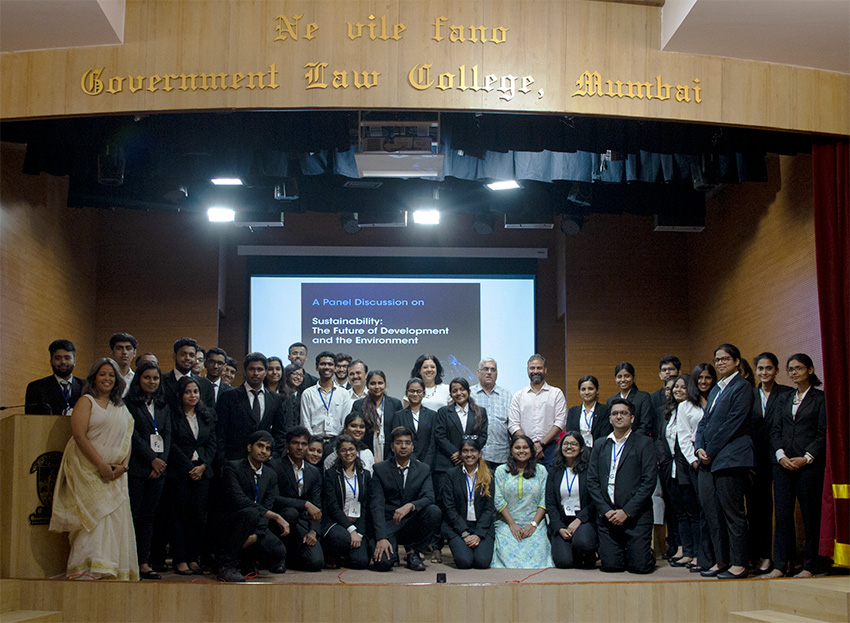
Senior forest officer Ritesh Sarothiya of the Madhya Pradesh Forest Department speaks to the participating judges at the Madhya Pradesh State Judicial Academy as part of WCT’s training programme. Credit: WCT
This annual event is helping the participating law students get a serious understanding of the challenges of wildlife conservation and environment. The reading and preparations they have to undertake to deliberate on the carefully curated mock cases that are built around real, pressing, and current wildlife issues, forces them to become more conversant with these otherwise neglected matters. To boot, the format of the competition pits them against each other in legal arenas that are presided over by some of the most accomplished judges from the High Courts of Bombay and Karnataka.
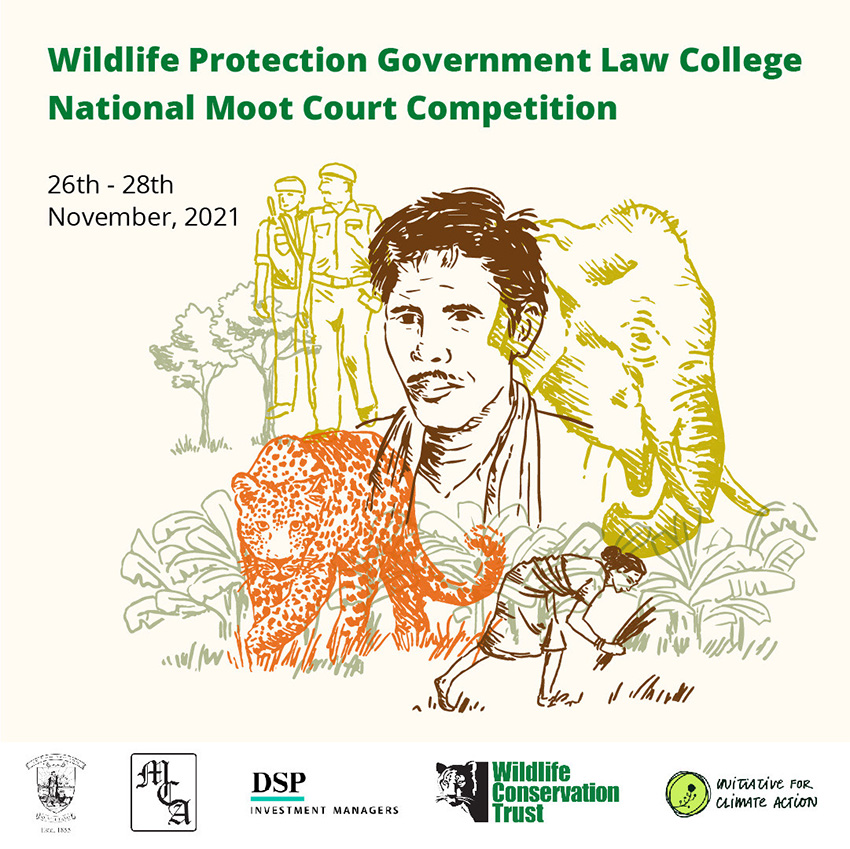
A poster announcing the 3rd Wildlife Protection Government Law College National Moot Court Competition that was held in 2021. Credit: WCT
In the long-term, the event hopes to build a pool of bright legal minds for combatting wildlife and forest crime issues.
As a GLC almuna who worked with WCT to co-create the Wildlife Protection National Moot Court competition, Shivangi Adani, who now works as an Innovation Associate – Environment at Dalberg, Asia, says, “We had almost no training in representing environmental issues in law school. Most of the competition was focused on commercial or constitutional issues. I noticed this vast gap while practicing environmental law myself with only a handful of others. That is why I collaborated with WCT in initiating the moot court competition with the aim of spotlighting legal wildlife issues amongst students as well as the esteemed senior lawyers presiding over the competition. The hope is that the legal community takes these conversations forward through their work.”
About the author: Purva Variyar is a conservationist, science communicator and conservation writer. She works with the Wildlife Conservation Trust and has previously worked with Sanctuary Nature Foundation and The Gerry Martin Project.
Disclaimer: The author is associated with Wildlife Conservation Trust. The views and opinions expressed in the article are her own and do not necessarily reflect the views and opinions of Wildlife Conservation Trust.
Your donations support our on-ground operations, helping us meet our conservation goals.
Related Links
- Forensics Vs. Wildlife Crime: On A War Footing
- Past Events
- Wildlife Crime: Prosecution Hurdles
- Institutional and Corporate Donors
- Wildlife Week – We Are All In This Together
- Why India Needs Stronger Laws to Protect Exotic Species on its Soil
